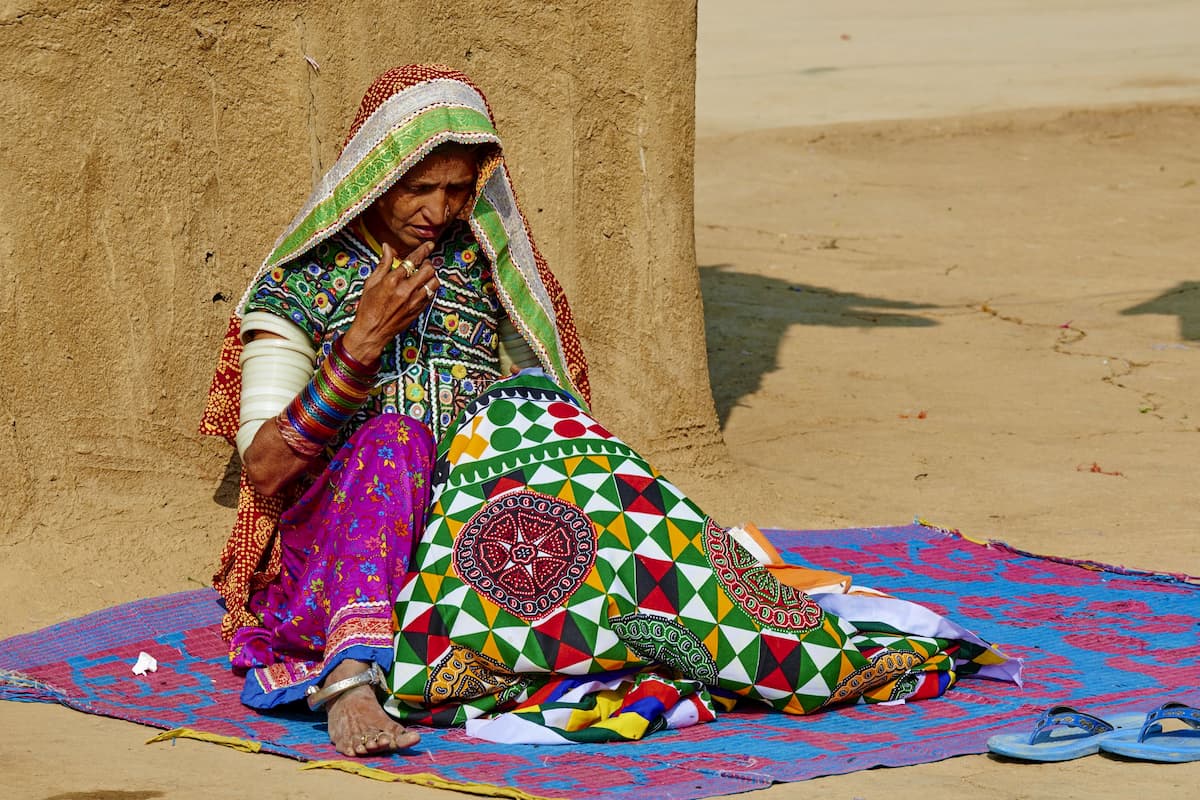As many colors as you will find in Jaipur on your visit, you are bound to come across equally as many varieties of art and craft in this city. It is unreasonable to see Jaipur’s culture in isolation from this integral attribute of Jaipur. There are craftsmen and special skilled artists who have devoted their lives just into making handicrafts for the city and developing the city one step ahead in art and craft form. It is not only the best destination to explore India’s best handicrafts but the only place that offers purity in its products as no artificial ingredients go into making some of the finest pieces of art and craft from around the world.
Maharaja Sawai Jai Singh II invited numerous experts of various arts and crafts from different corners of India, facilitated them to reside here, and honoured them with land, money and daily needs; so that they can shape their art. That’s why, today, Jaipur is renowned for its Miniature Painting art, Wall Painting art, Blue Pottery art, Stone Carving art, Wooden Handicraft, Metal art, Handicraft work on Camel Leather, Lacquer items, Gems & Jewellery art, Saree (traditional wear of Indian women), Hand Made Puppets art, Block printed bed sheets (handwork), Bandhej (Tie and Dye fabric), and other Handicraft work.
Must Read: Jaipur Getaway from Delhi – A walk back in time
Table of Contents
Jaipur Jewelry Art
Jaipur, as the largest exporter of Gold, Diamond and Stone Jewelry in Asia, Jaipur jewellery markets are one of the biggest jewellery markets in India. As Rajputs’ were very fond of jewellery, the jewellery business established and nourished in Jaipur during the reign periods of Rajput rulers. Especially, during the reign period of Sawai Jai Singh II, Jaipur became the central hub of India for the jewelry of precious and semi-precious stones as well as for remarkable gold and silver work. Jaipur city is now renowned globally for cutting, finishing, carving and polishing the precious and semi-precious stones used in a large variety of Jaipuri Jewelry. Jaipur is the only city finishing Tanzanite (blue diamond) in the world. Meenakari and Kundan work are the world famous techniques used in Jaipur jewellery.
Hindu Punjabis brought Meenakari, or the skill of enamelling, from Lahore to Jaipur. Did you know that enamelling was originally meant to protect gold, which in its pure state is so soft and malleable that it can easily wear away? The Mughal fashion was to enamel the reverse side of jewellery to protect it from contact with the wearer’s skin. The two special techniques practised in Jaipur – Kundan and meenakari – are equally intricate and splendid, and it is impossible to say which outshines the other. Kundan is the Mughal-inspired art of setting of stones in gold and silver. Gems are bedded in a surround of gold leaf rather than secured by a rim or claw.
Most of the popular Jewellery shops can be found in Johri Bazar, void Sundays as mostly the shops are closed in Jaipur
Must Read: Temples In Jaipur – Finding the Spiritual Solace
Bandhani or Tie and Dye
Not just can you find Jewelry in Johri bazar but it has a variety of shops where you can find Bandhani, as the name suggests, this technique involves two stages: tying sections of a length of cloth (silk or cotton) and then dunking it into vats of colour. The rainbow-tinged turbans of the Rajputs and the odhnis of their women are shaded by this method of resist dyeing. The main colours used in Bandhani are yellow, green, red and black. The Jaipur dyer rarely works with more than two dye baths while the additional colours are spot dyed, which makes the process much easier. Thereafter, the fabric opens out into amazing designs in kaleidoscopic colours: dots, circles, squares, waves and stripes. The laheriya or the ripple effect is achieved by a variation of this technique. Tourists specially come to the city to buy these Bandhani apparels. The major fabric used in bandhani printing is generally cotton, sometimes Silk is also used.
Zari, & Zardozi
Zari is gold, and zardozi embroidery is the glitteringly ornate, heavily encrusted gold thread work practised in Jaipur and a few other cities of and you can see it for yourself how cloth is printed by hand. This method, though laborious, is actually quite simple and merely calls for precision. The cloth is laid out flat on a table or bench and a freshly dipped block is hand pressed on to the fabric to form a continuous, interlocking pattern. The floral motifs favoured by the printers of Bagru and Sanganer are Persian in origin, though Sanganeri designs are more sophisticated. They usually have a white or pale background decorated with colourful twigs or sprays. The not-so-fine Bagru prints were initially meant for peasants and had a light brown background. One of the famous shops where you can see this happening is Surbhi Kala Kendra it is one of the oldest shops there and their artwork used to be telecasted on DD as well. One another famous product they offer is the 100gm quilt which is very light and provides the warmth of heavy quilts in winters.
Silver Jewelry
Traditionally, jewellery has served as a repository of wealth, and a bejewelled wife is the family’s walking-talking treasury. While the prince had his gold, the peasant found security in silver. The village women of Rajasthan are togged up from head to toe in cumbersome silver ornaments, which they never remove. The various kinds of adornments they use are: tikka or the spherical pendant on the forehead; dangling earrings called jhumkas; hansli or the choker; nath or the nosering which may be attached with a chain to the adjacent jhumka; a girdle or taqri for the waist; a series of bracelets called kadas; anklets with tiny bells on them; and finally the chakti or toe rings of the married women. Not to be outdone, the macho men of Rajasthan commonly wear chokers, earrings and bracelets. Apart from jewellery, you’ll also find little silver boxes, statuettes, containers, glasses, plates, bowls, pens, hand mirrors and gilt combs.
Just as the state, Jaipur belongs to, is titled royal, the same essence is realized in the art and crafts of Jaipur offering the soul of creativity and innovation by the craftsmen of Jaipur. It is without a doubt a shopper’s paradise.
Blue Pottery
Jaipur Blue Pottery is made of Egyptian Paste. The blue glaze on pottery is made of Multani Mitti. Mostly Jaipur blue pottery is decorated with animal and bird motifs. Jaipur blue pottery is very fragile because it is low-fired. Jaipur is now the biggest centre of Blue Pottery manufacturing. Powder of different component is combined and made into a paste which is then made into pots. Jaipur industry is pretty famous for this, if you want to have a look on how it is made then probably you’ll have to go to the outskirts of Jaipur since all the factories have been moved out to avoid dust pollution but you can find the retail shops all around in Jaipur.
Jaipur Leather
Jaipur’s leather art and craft are popular all over the world. Handmade leather shoes, hand-bags, vases, purses, painted lampshades, belts, hats, shields, stools and collapsible chairs made in Jaipur are famous worldwide. Jaipur leather shoe (Mojari or Jooti). Jaipur leather shoes are famous because of ethnic designs and Kashida work on shoes. These shoes are known as Mojari or Jaipuri Jooti. In addition to royal and ethnic designs, these Mojaris are very comfortable to wear and the most unique feature is the temperature inside Mojari maintains almost equal to body temperature. Due to this unique feature of Mojari, it can wear in all seasons. They are known to have special healing purposes if you’re looking to have a look at them and know more I would suggest you to visit chacha leather shoe shop located at Amer road.





